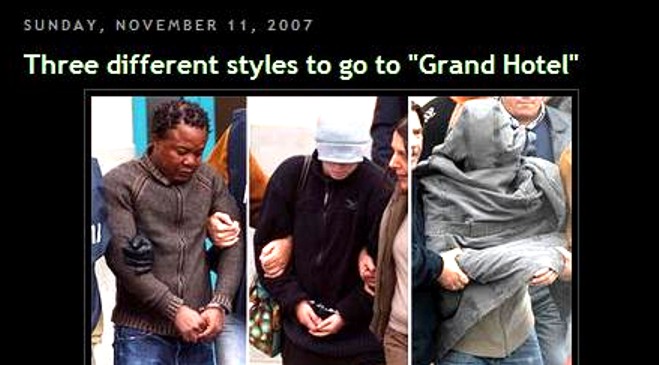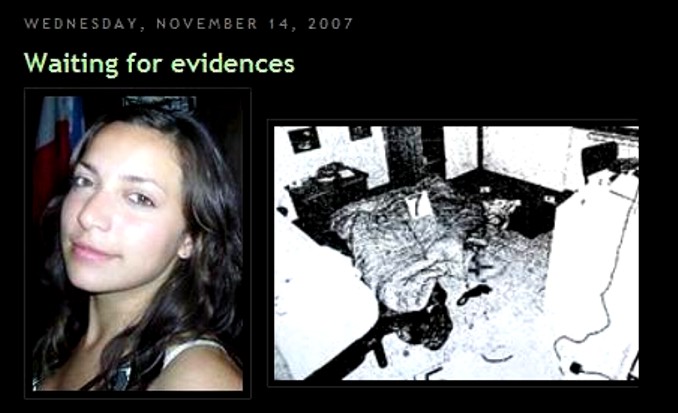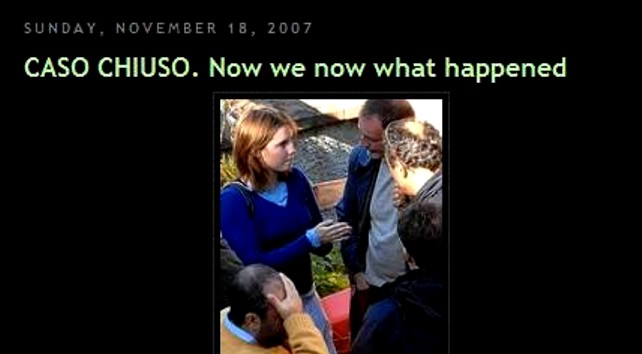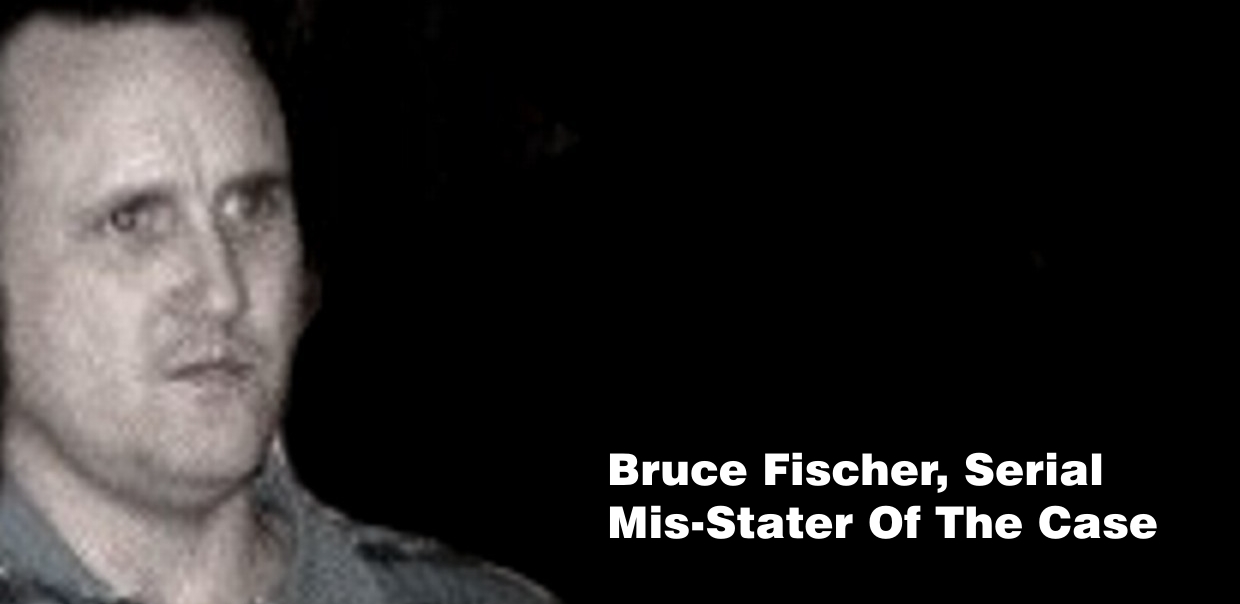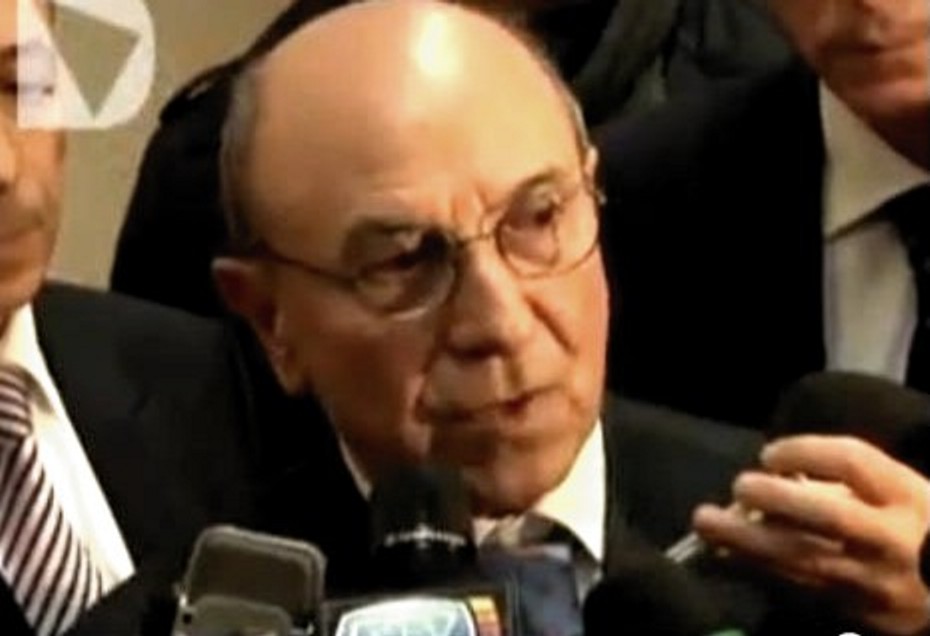
Political & economic headsup: US is demonstrating unsorted systems problems in spades. Do watch your investments. As Washington DC policy gets more & more off-target, big New York investors are betting very heavily that stocks will soon crash. Gross systems mismanagement 2017-20 tanked stocks several times.
Monday, March 18, 2013
One Week From Today The Rulings Of The Supreme Court of Cassation Should Be Announced
Posted by Our Main Posters
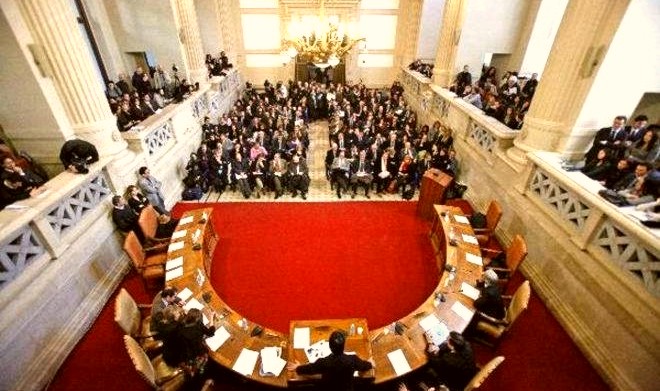
The Supreme Court received the Galati appeal and the Knox appeal over a year ago - the full documents - and began considering them in depth some months ago.
The appeals are being handled by the Court’s elite First Section which has a reputation for taking the kind of precedent-setting jurisprudence issues the Galati report raises very seriously. This looks like it could be bad news for RS and AK.
The Italian judiciary has had more than enough of the harassment of the Knox campaign, and the name of the lead judge has deliberately not been announced so that no attempts to reach them or distract or vilify them can be made.
Similarly the investigation into whether Sollecito in his book is in contempt of court for attempting to undermine an ongoing legal process has also been taken behind the scenes. If Knox’s book comes out before the legal process ends she too may be investigated for contempt of court.
The Court of Cassation may entertain some oral arguments from the prosecution and defenses next monday and will then announce their decisions on the two appeals on monday or tuesday. Written versions should follow a few days later.
If they decline to change both the Hellmann-Zanetti verdicts, Knox would remain a felon for life for framing Patrick, but otherwise RS and AK would walk free. If they accept Knox’s appeal but not Galati’s, RS and AK would both walk free, and her felony record would be erased.
Any other outcome would result in the cases being punted back down to the lower courts, this time around to get it right.
Betting in Rome and Perugia is that there is probably going to be a complete rejection of the H-Z outcomes as being of illegally wide scope (that stands out a mile) and RS and AK would be back to where they were at the end of the Massei trial, only worse off because of Sollecito’s book.
This betting is based in part on Hellmann having been edged out by the Council of Magistrates, rumor has it for embarrassing his peers with slipshod work. Any repeat of the appeal (second level) could take place quite fast, and maybe in Florence with a new prosecution team.
It would not be stretched out for illegal DNA consultancies or illegally try to second-guess all of the trial evidence in absence of trial experts and trial witnesses who originally presented it, or be in session only on occasional saturdays for the convenience of Bongiorno and her baby.
Saturday, March 16, 2013
The Oil Tanker Incident: Things Between Italy And India Become… Complicated
Posted by Peter Quennell

India and Italy have long been close allies but an incident a year ago perversely reverberates on.
We posted on it here and here with some excellent commentary from our Indian posters Sara and Chami.
Italy maintained that the shooting of two fishermen who the soldiers above had wrongly assumed were pirates happened in international waters, and the oil-tanker company offered to pay substantial damages to the grieving families, which they appeared at one point to have accepted.
But though the tanker was long gone from the port of Kochi, the soldiers remained under house arrest, and in the state of Kerala there remained a disposition to put them on trial though the central government told Kerala they had no jurisdiction. On the say-so of the Italian Ambassador in New Delhi that they would return, the soldiers were recently allowed to return to Italy.
Now it seems Italy doesnt want to send them back. In quick retaliation, the Indian mission to Rome may be in the process of being diplomatically downgraded, the Italian Ambassador to India is being prevented from leaving India, and the Indian Express sees a sardonic side to all of this.
To complicate the lives of the diplomats, Sri Lanka has arrested 53 Indian fishermen which it said were illegally fishing in its territorial waters, and is still holding 19 of them captive. And Italy is seeking to have a number of CIA operatives returned to Italy to stand trial there for kidnapping.
One bit of genuine good news is that piracy is at a five year low. Phew. Thanks for that one.
Saturday, March 09, 2013
Subject To Appeal, Ex PM Silvio Berlusconi Is Sentenced In Milan To One Year For Corruption
Posted by Peter Quennell
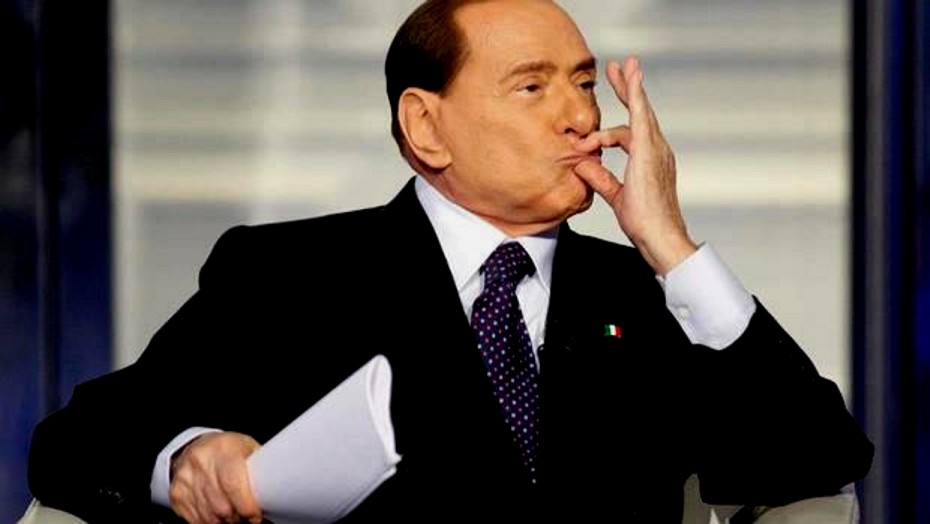
The New York Times reports on this, the first outcome out of three corruption cases..
The story is in line with many previous posts here on the popularity and the efficient and unbending nature of Italian law enforcement. This is a system that has had to contend with a string of corrupt politicians and three mafias, and is slowly but surely winning the wars against all of them.
Silvio Berlusconi, the former prime minister and dominant political figure in Italy, was convicted and sentenced on Thursday to one year in prison for his role in the publication of a wiretapped conversation in a newspaper his family owns.
The verdict, handed down in a Milan court, was the second conviction for Mr. Berlusconi, the leader of Italy’s main center-right political party, in the past five months. It promises to weaken his position further as negotiations begin later this month to form a governing coalition, after inconclusive national elections late last month in which his party, People of Liberty, ran a close second behind the Democratic Party.
After Thursday’s conviction, “it will be difficult for Mr. Berlusconi to have an institutional role in the next government, either in the Senate or in any other Italian institution “” he’s out of the game,” said Sergio Fabbrini, director of the school of government at Luiss Guido Carli University in Rome. “But in the Italian public opinion, there won’t be any difference,” he added. “The country is already divided between those who think he is a criminal and those who think he’s a victim. It’s been that way for 15 years.”
Tuesday, March 05, 2013
Disarray And Decay In The Pro-Knox Parade: #2 Key Knox-Mellas Flunkie Now AWOL On 2 Continents
Posted by Peter Quennell
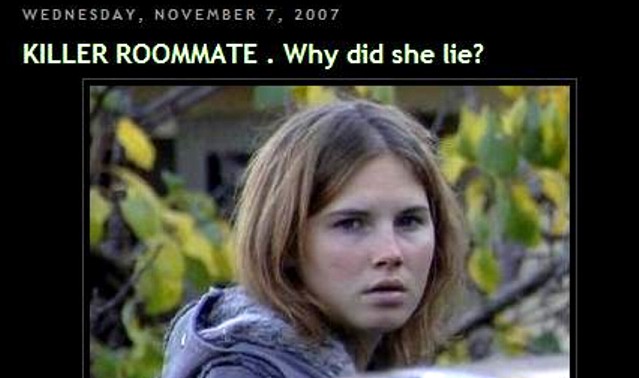
[Click the image above for Frank Sforza’s first posts in November 2007 - scroll down for English]
Foolish False Allegations Against Italian Officialdom Sparking Increasingly Tough Legal Reaction
That was the header of our post of 19 December. This is the excerpt on Perugia Shock blogger “Frank Sfarzo” who like Bruce Fischer is unwillingly outed under his real name (Frank Sforza) and found to be exceedingly mundane.
Sforza hides behind the name Frank Sfarzo as an intemperate and rarely accurate blogger on the case. He brings no known professionals skills to the task. He is reported to be the target of criminal charges relating to alleged abuse of the sister and mother with whom he lives. His unsavory reputation and desperate finances mushroomed openly the other day, when he was reported in personal confrontations while visiting Canada and Hawaii.
Sforza now faces a defamation suit as well, for claiming to the whole world via Doug Preston and Joel Simon of the Committee to Protect Journalists in New York that he was being persecuted by a prosecutor back in Perugia. The prosecutor was not even involved. Seems to us an open and shut case.
While on the west coast of the United States and Canada and Hawaii late last year, Sforza attracted the attention of the police in three cities.
Charges in two were dropped but he was a no-show for the court case Kermit elegantly described here. The judge issued a warrant for his arrest.
Meanwhile his legal trouble in Perugia escalated. He failed to show for court hearings in Perugia in December and January and his lawyer walked. He was to face charges of violence against the police when they were called to quell a rampage. They were called by his mother and sister.
Now Frank Sforrza has again failed to show up in court, this time in Florence, and police will be actively looking for him. This case concerns one of his craziest “scoops” which was that Mignini was in cahoots with drug dealers, whereas exactly the opposite is true, Perugia drug dealers fear Mignini and he has taken a number of them down.
Sfrorza was initially cocksure (like Sollecito) on his return to Italy late 2012 and made taunting posts on Facebook and Fischer’s Misinformation Forum (like Sollecito) early 2013 but he has since gone very quiet and fled the internet (like Sollecito) as the deep legal trouble he is in slowly seeps in.
Back in 2007 and 2008 those of us who were here then followed Frank’s Perugia Shock postings and it was only late in 2008 that for murky reasons he jumped the shark and switched his sweaty attentions over to Amanda Knox. Read his first posts here. Scroll down for English.
They were actually at times accurate - and he clearly did think Sollecito and Knox were up to their ears in it. Read his headline on the last image below. On 10 November 2007 he even penned this satire.
A: Shit, my roommate is dead, do you mind if I sleep at your place?
R: Sure, so we can have another couple of joints. The guy just supplied me.
A: Greaat!
R: Hey what are those cellpones?
A: Oh, it’s her cellphones. Do you think I should hide them?
R: Give them to me… Uuuuhuuuh! (he throws the cellphones away).
A: Oh my goood, what have you done? You’ve thrown them in that garden! They gonna find them!
R: Naaa, don’t worry. My sister is Carabiniere, I know how to handle such things.
A: Hey, you should throw away your knife too.
R: What? Throw my knives away? I’m from Puglia, you know? I always have a knife with me.
I can’t believe you just said that. You know what? You better sleep at your place.
A: Oh no, please, don’t make me sleep at my place. There’s blood in the bathroom. I’ve already got my sweater dirty. I had to throw it away, can you believe it? I don’t’ wanna loose another sweater.
R: Oh right, good, ok, sorry, you can sleep at my place. By the way what happened to your roommate?
A :She made everything dirty with her blood, and then she stopped moaning about one hour ago.
R :Hey I was there with you at that time.
A: Are you sure?
R:Yes, don’t remember? We were… you know?
A: What?
R: We were having sex. Did you already forget?
A: I’m not sure.
R: Actually I’m also not sure too, now, I’m too smoked.
A: We should do something than. They’ll come to take us.
R: Naaa. Are you kidding? I’m from Puglia. There’s mafia in Puglia, you know? My sister is Carabiniere! And My father is a doctor, you know? DOCTOR! He makes a call and I’m not gonna have any problem.
A: What about me? Well, if you save me too I’m gonna give you anything you want. You can have me anytime, no problem.
R: Actually I’d prefer some joints. By the way, no problem. Now we break the window and they’ll think was some thieves.
A: What if they don’t buy it?
R: Don’t worry, I know how this things go.
A: Yes, your sister is Carabinieri. Well, anyways, I’ve sent a message to Patrick so they can still think was Patrick.
R: Fine. He’s such a perfect suspect. Now let’s go to sleep. I’ll set the alarm so tomorrow I’m calling my sister.
A: Are you gonna remember that?
R: I’ll put a note on the fridge.
A: However… Are you sure that wasn’t us to hurt her with your knife?
R: To hurt who?
Wednesday, February 27, 2013
Disarray And Decay In The Pro-Knox Parade: Mafioso Wannabe Bruce Fischer’s Malicious Claims
Posted by The Machine
The Knox supporters’ leader-of-the-parade spirals up
Back in October 2008, in our first long post ever on Meredith’s case, Skeptical Bystander highlighted the crazed pro-Knox attack sharks that were starting to appear on Candace Dempsey’s blog.
Psychologists warned us that a competitive leader-of-the-parade spiral was wittingly or unwittingly being encouraged by the Curt Knox/David Mariott/Anne Bremner campaign, and that this could be far from the worst we’d see.
Sure enough, late in 2008, Frank Sforza (timidly posting anonymously as “Frank Sfarzo”) did a u-turn on his blog Perugia Shock from nicely supporting Meredith and the prosecution to angrily supporting Amanda Knox and vilifying the prosecution and pro-Meredith sympathizers. (A u-turn for which he now pays dear.)
At a West Seattle Knox fundraiser in January 2009 a really angry Paul Ciolino wowed the crowd with red meat. He attempted to leapfrog all the other pro-Knox hotheads with a vicious personal attack on the prosecution. Ciolino sounded so crazed that even Amanda Knox’s defense lawyers had to distance themselves from him.
Soon after, Doug Preston, long a timid sniper safe on the other side of the Atlantic from Italy, published his angry, error-ridden Monster of Florence with its surreal Afterword on Meredith’s case.
From that point on, slamming the Italian police and police experts and prosecution without any restraint (for which there has been zero parallel in US or UK legal history) became a cowardly passion across the Atlantic which any ill-informed hothead could play. The Italian MP Rocco Girlanda next leaped to the head of the parade with easy access to Knox in prison, and some of his slobberings were so bizarre that even the Knox-Mellases for once thought to check that supporter out.
Fischer attempts to elbow his way to the front
First mention of “Bruce Fisher of New York” on Perugia Murder File was in a comment by myself on 7 March 2010. Even back then, Fischer had a whole handful of basic facts about the case wrong but heeded no advice.
Fischer arrived after the 2009 Massei trial was done, and from that time on he tried to absolutely dominate the pro-Knox parade. His fundamental effort is to muddy the water on the hard evidence and inflame American public against Italy and its cops, court, and ustice officials.
Such inflammatory actions are in fact illegal under Italian law and especially so when very senior justice officials are falsely accused of crimes.
Fischer wrote a joke of a book, the very worst on the case. He has posted endless badly-written posts on his own websites and forums, with no correction when they proved wrong.
He also posted endless badly-written posts on other blogs and group blogs like Technorati (evicted), Gather (evicted) and Ground Report, with no correction when they proved wrong. And he posted dozens of videos on Youtubes with no correction when they proved wrong.
Fischer set out to hijack the Amanda Knox Wikipedia page, which to knowledgeable Italians now looks absolutely bizarre. He recruited a raft-full of confused and uncurious nitwits like Steve Moore, Nigel Scott, Ron Hendry, David Anderson, Saul Kassin, and Michael Wiesner.
All of them are now lesser people than they once were.
Fischer is clearly a clinically deeply angry man (he has in his past little education, a disaster of a career, several bankruptcies, and a house repossession) so not unexpectedly most of Fischer’s prolific output has been in the form of vicious personal rants.
Revealed 18 months ago to be merely Bruce Fischer, a shop assistant in a mall store on the far outskirts of Chicago, with not a single honorable accomplishment to his name, he chilled somewhat. But his personal rants all still remain online, and so does his epidemic of wrong claims.
Lately he has been trying frenetically to shore up the edifice of the seemingly unstable Frank Sforza. Sforza is now on the run from the American law and facing several trials in Italy; Sforza’s own site has fled behind the scenes.
This first post in the series nails 20 of Fischer’s malicious claims intended to inflame public opinion against the police and prosecution which he has long pushed hard on his websites and other websites and forums.
Bruce Fischer on Amanda Knox’s interrogation
On his website under the heading The Illegal Interrogation of Amanda Knox, Bruce Fisher gives what appears to be a very detailed eyewitness account of what happened to Amanda Knox when she was questioned at the police station on 5 November 2007.
The problem is Bruce Fischer wasn’t actually present when Knox was questioned and he doesn’t know what happened. His account is repeatedly contradicted by numerous witnesses who were actually present. These witnesses include Amanda Knox’s interpreter, Anna Donnino, numerous police officers from different units from Perugia and Rome and Amanda Knox.
Malicious Claim 1: Amanda Knox repeatedly told the truth
Bruce Fischer’s claim that Amanda Knox repeatedly told the truth is complete and utter nonsense. Even a simpleton could understand that Amanda Knox’s repeated claims that Diya Lumumba killed Meredith are not true and that it’s not possible for her to be in two different places - Sollecito’s apartment and the cottage on Via della Pergola - at the same time.
Judge Micheli, who presided over Rudy Guede’s fast-track trial and sent Knox and Sollecito to trial, noted that they had given multiple alibis and had lied in attempt to cover for each other. The mobile phone records, the data recovered from Sollecito’s computer and the corroborative eyewitness testimony provide irrefutable proof that she lied repeatedly.
Judge Massei outlined numerous examples of these lies in his report: she falsely claimed she received a text message from Diya Lumumba when she was at Sollecito’s apartment (322); there are various discrepancies in her statements about the time she and Sollecito ate dinner (78); her claim that she and Sollecito had a peaceful night of continuous and prolonged sleep is contradicted by Sollecito’s activity on his computer, the turning on of his cell phone and the testimony of Marc Quintavalle (85).
Even Amanda Knox’s lawyer, Luciano Ghirga, conceded that she had given conflicting accounts to the police:
All of the lawyers have imposed on Amanda the gravity of her situation, and the gravity of accusing other people. They have all told her that she needs to tell the truth because there have been differences in the statements.
According to Anna Donnino, her interpreter, she denied responding to a text message from Lumumba.
She had denied responding to an SMS message from Mr Lumumba telling her there was no need to come to work because there were few customers, leaving her free for the evening. But she broke down when police said phone records showed that she had done so, Ms Donnino said.
Malicious Claim 2: The interrogation of Amanda Knox was illegal
No court in Italy has ever ruled that any of Amanda Knox’s questioning on 5 and 6 November 2007 was illegal. This explains why Bruce Fischer is unable to support his claim with any reference to a court ruling.
Malicious Claim 3: Amanda Knox was told Diya Lumumba killed Meredith and she did not give Patrick’s name to the police. His name was suggested to her.
According to the corroborative testimony of multiple witnesses, including her interpreter Anna Donnino, Amanda Knox voluntarily and spontaneously accused Patrick Lumumba of murdering Meredith.
After hearing and weighing up the testimony of these witnesses and Amanda Knox, Judge Massei stated that it couldn’t be claimed that “Amanda Knox was persuaded by the investigators to accuse Diya Lumumba aka Patrick, by means of various pressing requests which she could not resist.” (The Massei report, page 388.)
He noted that there had been “no corroboration of the pressing requests which Amanda was seemingly subjected to in order to accuse Diya Lumumba of the crime committed to the detriment of Meredith.” (389).
Judge Massei concluded that Knox had freely accused Diya Lumumba of Meredith’s murder.
Malicious Claim 4: Amanda Knox was slapped on the back of the head.
All the witnesses who were present when Knox was questioned, including her interpreter, testified under oath at the trial that she wasn’t hit. Even Amanda Knox’s lawyer, Luciano Ghirga, distanced himself from these allegations:
There were pressures from the police, but we never said she was hit.
Malicious Claim 5: This abuse went on for hours until Amanda was finally broken.
Leaving aside Fischer’s unsubstantiated claim that Amanda Knox was abused for hours, she was questioned for approximately 2 hours and 45 minutes on 5 November 2007. According to Barbie Nadeau Amanda Knox’s questioning started at about 11.00pm:
Since Knox was at the police station, the head of the murder squad decided to ask her a few questions. Her interrogation started at about 11 p.m.
Knox questioning was stopped at 1.45am when she became a suspect and made her first witness statement. She wasn’t actively questioned again that night. Mignini later witnessed another statement but no questions were asked.
Malicious Claim 6: Amanda Knox was suffering from extreme exhaustion with no food or water.
A number of witnesses who were present when Knox was questioned, testified that Knox was given something to eat and drink. Even Amanda Knox admitted this was the case in court.
Ms Napoleoni told the court that while she was at the police station Ms Knox had been ‘treated very well. She was given water, camomile tea and breakfast. She was given cakes from a vending machine and then taken to the canteen at the police station for something to eat.’ (Richard Owen in The Times, 1 March 2009).
Also from Richard Owens in The Times.
Ms Donnino said that Ms Knox had been “comforted” by police, given food and drink, and had at no stage been hit or threatened.
John Follain in his meticulous book Death in Perugia also reports that Knox was given food and drink during her questioning:
During the questioning, detectives repeatedly went to fetch her a snack, water, and hot drinks including camomile tea. (Death in Perugia, Kindle edition, page 134).
Malicious Claim 7: The Italian Supreme Court stated that the interrogation was illegal because Amanda did not have an attorney present.
The Italian Supreme Court has never stated that Amanda Knox’s questioning on 5 November 2007 was illegal. Bruce Fischer eventually admitted this was not true on PMF.net
When it comes to the admissibility of the written statements, you are technically correct. The interrogation itself was never ruled illegal.
However, he still hasn’t corrected this Malicious Claim on his website.
Malicious Claim 8: Sollecito couldn’t support Knox’s alibi because he was sleeping.
Bruce Fisher’s claim that Sollecito was only speaking about when he was sleeping is completely contradicted by Sollecito’s witness statement:
Amanda and I went into town at around 6pm, but I don’t remember what we did. We stayed there until around 8.30 or 9pm.
At 9pm I went home alone and Amanda said that she was going to Le Chic because she wanted to meet some friends. We said goodbye. I went home, I rolled myself a spliff and made some dinner. (Aislinn Simpson, The Daily Telegraph, 7 November 2007).
Police said Raffaele Sollecito had continued to claim he was not present on the evening of the murder. He said: “I went home, smoked a joint, and had dinner, but I don’t remember what I ate. At around eleven my father phoned me on the house phone. I remember Amanda wasn’t back yet. I surfed on the Internet for a couple of hours after my father’s phone call and I stopped only when Amanda came back, about one in the morning I think. (The Times, 7 November 2007).
At the trial, Sollecito refused to corroborate Knox’s alibi that she was at his apartment.
Knox maintains that she spent the night of Nov. 1, 2007, at Sollecito’s house. Sollecito did not take the stand during this trial, and his lawyer told NEWSWEEK that it was, at least in part, because he could not corroborate Knox’s alibi. (Barbie Nadeau, Newsweek).
Malicious Claim 9: Amanda Knox gave in to the interrogators demands by describing an imaginary dream or vision.
Contrary to Bruce Fisher’s claims that Knox described an imaginary dream or vision, Amanda Knox makes no mention of an imaginary dream or vision in her two witness statements. She categorically states that she met Diya Lumumba at Piazza Grimana and that they went to the cottage on Via della Pergola. In her first witness statement, she claims that Lumumba killed Meredith.
Bruce Fischer on the double DNA knife
Malicious Claim 10: No other knives were taken from Raffaele’s apartment.
Fischer makes yet another demonstrably Malicious Claim. He clearly hasn’t read the Massei report in its entirety because Judge Massei discusses a jack-knife that was 18cm long with an 8cm blade at some length and the results of the DNA tests that were carried out on it:
He (Armando Finzi) recalled they found another knife whose total length was 18cm, with an 8cm. blade… (106).
On the jack”‘knife, 4 samples were taken, with negative results where blood-derived substances had been looked for; on the fourth sample, which involved the handle, the genetic profile was found to be of Sollecito plus Knox…
Four samples were taken from the jack-knife and only one yielded a positive genetic result: the sample taken from the belt clip. The trace did not turn out to be blood and it yielded a mixed genetic result: Sollecito plus Knox. To confirm the presence of result the Y profile of Sollecito. (194).
Andrea Vogt reported that another knife was taken into evidence in article for The Seattle Post-Intelligencer:
A small knife was taken into evidence from Sollecito’s bedroom, along with other items. (Andrea Vogt, The Seattle Post-Intelligencer, 28 February 2009).
Malicious Claim 11: The knife was chosen from the drawer because it looked clean.
Fischer is desperately trying to discredit the police investigation by dismissively and falsely claiming that the knife was chosen because it simply looked clean. Armando Finzi was the police officer who bagged the knife. He testified that he thought it was the murder weapon because it was compatible with the wound on Meredith’s neck. Andrea Vogt explained this in the same article:
Armando Finzi, an assistant in the Perugia police department’s organized crimes unit, first discovered the knife in Sollecito’s kitchen drawer. He said the first thing he noticed upon entering the place was a “strong smell of bleach.” He opened the drawer and saw “very shiny and clean” knife lying on top of the silverware tray.
“It was the first knife I saw,” he said. When pressed on cross-examination, said his “investigative intuition” led him to believe it was the murder weapon because it was compatible with the wound as it had been described to him. With gloved hands, he placed the knife in a new police envelope, taped it shut with Scotch tape, then placed it inside a folder, he said. There were smaller and bigger knives in the drawer, but no others were taken into evidence from the kitchen, he said.
(Andrea Vogt, The Seattle Post-Intelligencer, 28 February 2009).
Malicious Claim 12: No DNA was on the blade.
Bruce Fischer’s bizarre claim that there was no DNA on the blade is contradicted by numerous DNA experts. Dr. Patrizia Stefanoni, Dr. Renato Biondo, the head of the DNA Unit of the Scientific Police, Professor Francesca Torricelli, former Caribinieri General Luciano Garofano and Professor Novelli have all confirmed that Meredith’s DNA was on the blade of the knife.
Even Greg Hampikian and Elizabeth Johnson’s letter confirm that the DNA on the blade of the knife was consistent with Meredith’s DNA. Carla Vecchiotti also acknowledged that there was a complete DNA profile on the knife, but claimed it was unreliable because it should have been tested two or three times.
After categorically stating that there was no DNA on the blade, Fischer goes on to claim that the DNA on the blade came from the laboratory. However, Dr Stefanoni analyzed the traces on the knife six days after last handling Meredith’s DNA. This means that contamination couldn’t have occurred in the laboratory. In court, Carla Vecchiotti accepted that six days was sufficient to avoid contamination.
Malicious Claim 13: No additional testing will ever be available.
Professor Novelli testified that there are a number of laboratories with cutting-edge technology that could have carried out a test on the remaining DNA on the knife. (Galati-Costaglio Appeal, UK Version, page 26).
Malicious Claim 14: No control tests were done
John Follain points out in Death in Perugia that the control tests had been filed with another judge:
The tests had been filed with an earlier test, and Judge Pratillo Hellmann later admitted them as evidence. (Death in Perugia, Kindle Edition, page 409).
Forensic scientists Professor Novelli and Emiliano Giardina specifically who were consultants for the prosecution stated in an article in an Italian newspaper il Fatto Quotiano that the negative control were performed and these tests excluded the possibility that Meredith’s bra clasp was contaminated in the laboratory.
Bruce Fischer on the bra clasp
Malicious Claim 15: They (the Scientific Police officers) pass it (the bra clasp) around with contaminated gloves.
How could Bruce Fischer possibly know that these gloves were contaminated? He is not a forensic scientist. He didn’t quote any DNA tests on the gloves. There is no evidence that these gloves were contaminated and predictably Fischer provides no scientific findings to support his assertion.
Bruce Fischer on the Luminol footprints
Malicious Claim 16: None of the bare footprints detected with luminol tested positive for Meredith’s DNA.
Bruce Fischer gets his facts wrong for the umpteenth time and proves that he’s ignorant of the facts concerning the DNA evidence. The Luminol footprint in the corridor contained Meredith’s DNA. This information is contained in the Massei report:
Amanda (with her feet stained with Meredith’s blood for having been present in her room when she was killed) had gone into Romanelli’s room and into her [own] room leaving traces [which were highlighted] by Luminol, some of which (one in the corridor, the L8, and one, the L2, in Romanelli’s room) were mixed, that is, constituted of a biological trace attributable to [both] Meredith and Amanda”¦ (380).
Malicious Claim 17: “Yet the court concluded Amanda purchased bleach anyway.”
Judge Massei made no such claim. On the contrary, he argued that the fluorescence given off by Luminol was due to the presence of blood, not bleach (284).
To support his argument that bleach had not been used to clean the cottage, he pointed out no-one entering the house had not noticed any smell of bleach (283) and noted that if bleach had been used to clean the house, many traces would have been highlighted by the Luminol (284).
Malicious Claim 18: Quintavalle states that he only saw the side of Amanda’s face.
This claim is completely untrue. Galati pointed out in his appeal that Quintavalle’s own witness statement contradicts this claim:
A further observation on which the CAA bases its assessment of unreliability (thus, of low reliability) appears completely arbitrary, because contradicted by the statements of the witness. Quintavalle would have seen the young woman out of the corner of the eye and never from the front.
From the examination of the statements made by Quintavalle in the first instance trial completely different facts emerge because Quintavalle affirms what was referred to by the Court of Assizes on p. 71, when the young woman was still outside the store (cf. transcripts of the hearing 21 March 2009, p. 72) adding: “this young woman when she came inside, I looked at her to greet her; I mean I saw her at a distance of one metre, 70-80 cm”. (Galati-Costaglio Appeal, UK Version, page 39).
Malicious Claim 19: “He (Curatolo) said Amanda and Raffaele were chattering from about 9:30 pm to right before midnight on the basketball court near the cottage.”
Antonio Curatolo clarified in court that he didn’t watch Knox and Sollecito the whole time in Piazza on the night of the murder. Barbie Nadeau reported that he saw them on a couple of occasions:
...he (Curatolo) placed Amanda and Raffaele there, testifying that the two stood at the gate and watched the house around 9:30pm and again at around 10:30pm on November 1. (Barbie Nadeau, Angel Face, Kindle edition, page 116).
Malicious Claim 20: “During closing arguments, after all of his different theories had fallen apart, Mignini told the jury: “There is no motive.”
Mignini never told the jury that “there is no motive”. Barbie Nadeau pointed out that the prosecutors had changed their theory, but only rather slightly:
The prosecution lawyers began their case in January 2009 by arguing that Kercher was killed during a sex game gone awry. When it came time for closing arguments, they had changed the theory slightly, trying to make the case that Knox resented her prissy British roommate and killed her in hatred” A sex attack was still involved.
The Knox supporters’ leader-of-the-parade spirals down
Only 20 Malicious Claims are taken apart above but there are at least several hundred more. When you consider the sheer number of Malicious Claims that Fischer has made and how much these claims differ from the actual hard truths, you cannot trust anything he says.
And yet many of Fischer’s Malicious Claims have been unquestioningly widely accepted as fact, and have been repeated by many in the media. For example, Journalist Nathaniel Rich stated that Sollecito claimed that Knox could not have left his apartment for several hours while he was sleeping. A key Fischer claim.
More of Nathaniel Rich’s paroting of Fischer’s claims is dismembered here. Steve Moore’s paroting of Fischer’s claims is dismembered here. Saul Kassin’s paroting of Fischer’s claims is dismembered here. Michael Wiesner’s parotting of Fischer’s claims is dismembered here.
The credibility of Bruce Fischer and his disastrous leadership of the Knox parade have been completely shot to pieces. Any journalists who use Bruce Fischer as a source in the future should hang their heads in shame.
Monday, February 18, 2013
Raffaele Sollecito Now Under Formal Investigation For New Crimes Apparently Unprecedented
Posted by Our Main Posters
Breaking news. The Chief Prosecutor for Tuscany Dr Quattrocchi (above and below) has taken this investigation of Sollecito behind the scenes. Dr Quattrocchi is actually under no compulsion to make any of the Perugia and Rome complaints public before his investigation is complete. He has ordered all documents removed from the public domain. This is specifically to give the defense and their PR no advantage, and to make sure those others in Perugia who are going to complain about being defamed do so without harm.
Overview
This is a contempt of court case as court officials have been impugned. This is Wikipedia’s definition of “contempt of court” under US and UK common law.
Contempt of court is a court order which in the context of a court trial or hearing, declares a person or organization to have disobeyed or been disrespectful of the court’s authority.
Often referred to simply as “contempt,” such as a person “held in contempt,” it is the judge’s strongest power to impose sanctions for acts which disrupt the court’s normal process.
A finding of contempt of court may result from a failure to obey a lawful order of a court, showing disrespect for the judge, disruption of the proceedings through poor behaviour, or publication of material deemed likely to jeopardize a fair trial.
A judge may impose sanctions such as a fine or jail for someone found guilty of contempt of court.
We may now find out much more about the equivalent under Italian law.
When Raffaele Sollecito and Amanda Knox were released at the end of 2011, the prosecution filed a Supreme Court appeal within the allotted period. This automatically meant that Sollecito and Knox still stood accused of crimes until the Supreme Court finally signs off.
Typically Italian defendants in such a legal status get good legal advice, on the lines of “Shut up and keep your heads down. We need to be the only ones doing the talking here.”
Here such advice may or may not have been forthcoming, but the public record strongly suggests it was not. In fact Sollecios entire legal team is credited by both himelf and his shadow writer Andrew Gumbel with helping. This is what Gumbel wrote in his Acknowledgments:
Donatella Donati in Luca Maori’s office gave up many hours to make the official documentation available and to present it all in a cogent order. She’s a largely unsung hero in this story and deserves recognition for her extraordinary efforts on Raffaele’s behalf. Giulia Bongiorno, Luca Maori, and Tiziano Tedeschi answered questions and made comments on parts of the manuscript.
In the same Acknowledgments Sollecito credits the following.
I was lucky to have a crack legal team who showed their devotion to the truth and, in some cases, did not even request payment. The team of lawyers and consultants included Adriano Tagliabracci, Francesco Vinci, Bruno Pellero, Francesco Introna, Giulia Bongiorno, Maurizio Parisi, Daniela Rocchi, Luca Maori, Donatella Donati, Marco Brusco, Aldo Poggioni, Delfo Berretti, Tiziano Tedeschi, and Antonio D’Ambrosio.
Interestingly, Luca Maori has already left Sollecio’s legal team, and all eyes are now on Giulia Bongiorno. Buy plenty of popcorn. Lawsuits could fly between lawyers and family.
Since the end of 2011 Curt Knox’s forces seem to have have gone full steam ahead with their own vilifications of the Italian prosecutors, police, judges, and witnesses - in fact almost anyone who had any role in 2009 in finding them guilty, or came to believe that was a fair finding. Ourselves included.
In late 2012 Curt Knox apparently invited all the most fervent of these attackers to Seattle, including Frank Sforza and Bruce Fischer, as some sort of reward for their legally very ill-advised campaign. Buy plenty more popcorn. Lawsuits could fly here as well.
Raffele Sollecito’s forces in Italy had been a lot more restrained.
But at a stroke, the shrillness of Raffaele Sollecito leapfrogged that of Amanda Knox’s forces, with the publication of his book Honor Bound by Simon and Schuster in English in the UK and US last September,
INSTANTLY the book became notorious in Italy, because excerpts were read out by an Italian reporter in New York on the national television show Porta a Porta. Raffele Sollecito’s father Francesco was on that show, and he was increasingly forced to admit a key claim in the book was invented. It simply never happened. His son made it up.
The false claim by his son that Francesco was made to repudiate - it reappears over many pages - concerned a claimed deal engineered by his family and offered by the prosecution to Sollecito.
The deal he claimed was to roll over on Amanda Knox, and if Sollecito did so, he would be home free.
Following the Porta a Porta show, the book (obtainable on UK Amazon, where many false claims are repeated in the reviews) began to make its rounds in Italy. It took some time before many official parties accused of crimes by Sollecito obtained copies and started to explore their own legal possibilities. They are apparently still far from finished.
At the end of last week, the Chief Prosecutor for Tuscany Giuseppe Quattrocchi received the first official request from Perugia, which is to investigate 12 very serious claims in the book against the prosecution and the legal institutions of Italy. The complaint nominates a number of witnesses.
The Prosecution office of Florence now has a maximum of six months to investigate whether there is a case against Sollecito and other named parties. If so, they will steer it through the hoops of the Italian process.
The potential ripple effects of this appear to us to stretch on and on. They could come to engulf both legal teams (credited in the book with helping) and all of the PR for both defendants. Sollecito’s publisher and shadow writer are specifically named in the complaint
If Amanda Knox is not let off the hook by the Italian Supreme Court late in March (the outcome we consider most likely, given the great strength of the appeal) the smart way for Knox to go in light of this could be to junk all her websites, her book, and her interviews, and throw her supporters under the bus. Plus maybe get smarter lawyers - the aggressive and inexperienced Dalla Vedova does her no favors.
Keeping Amanda Knox’s head out of this deadly new line of fire may be very late - but maybe better late than never.
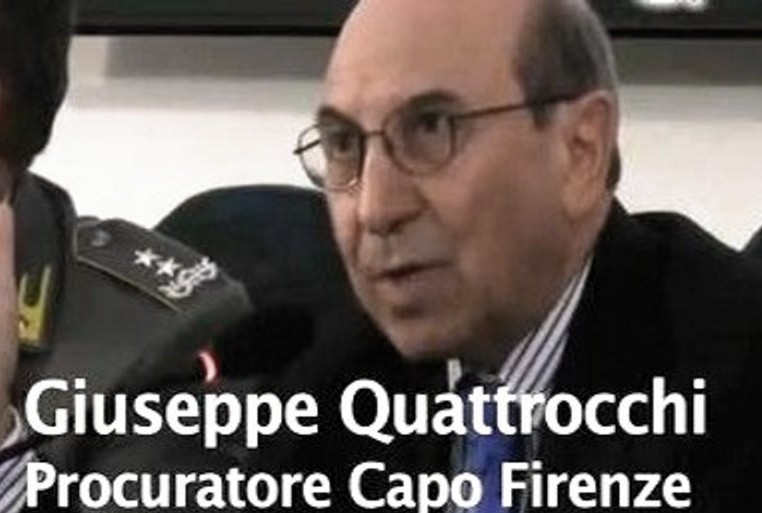
Wednesday, February 06, 2013
Should The Knox Defense Point The Finger At An Angry Daddy?
Posted by Our Main Posters
1. State Of Judicial Process
Given a level playing field (a big if) it seems for now that Amanda Knox and Raffaele Sollecito are almost certainly going down for the final count.
There is not the slightest sign that their defense lawyers know how to contend with the Supreme Court appeal filed by Umbria’s chief prosecutor Dr Galati. One may have already walked (Maori) and the fact that the others don’t respond publicly to the Galati filing speaks volumes to Italian lawyers.
If the first appeal (called in Italy the second level) is rerun in whole or in part, Sollecito and Knox could see Judge Massei’s “mitigating factors” annulled and find themselves each facing 30 years inside or even life.
The whole thrust of Sollecito’s ill-timed book (subtitle “how to shoot oneself in both feet”) is that he deserves to serve less time than Amanda Knox (who he “nobly saved”) and preferably to serve no time at all.
2. Sliding Scales Of Discussions
Many bright people follow the case. We have many lawyers and crime experts and even judges read here. Many took a long time to settle on a “guilt” point of view and approached it very professionally (reflected in many of the posts written by professionals here). This is contrary to the klutzy, amateurish FOA campaign and their inaccurate rants about “haters”.
There are various great sliding scales or continuums in considering all aspects of this case. A lot of what we talk about on PMF and TJMK is where, precisely, we should all come down on each of these various scales at the end of the day. Especially of course how the judges in Rome and Perugia should calibrate them.
Via Dr Galati’s appeal and especially Sollecito’s book, we now have a new one. If reconvicted, should Sollecito and Knox serve equal time? Or should one or other serve more? Let us approach this by considering first some of the most-discussed of the sliding scales.
1) Was Knox a good friend of Meredith or increasingly a pariah?
Many here incline strongly to pariah.
Knox has an obvious tin ear and sharp elbows, was doing little study in Perugia, was making life hell for all her flatmates, was bringing noisy threatening lowlife men home (the other three virtually never brought men home), was disturbing Meredith’s studies, was hitting on patrons in Patrick’s bar, and was definitely into drugs to the extent that she might already have become an addict.
2) Pre-meditated murder or a hazing or spontaneous spiral initiated by Guede?
At least some here incline to the view espoused by some psychologists that Knox and Sollecito were probably both at minimum fantasizing violence, Knox against Meredith, and Sollecito long-term generically.
Knox had become threatened by Meredith in several different ways: Meredith was prettier, was much funnier, had won the best available boy, was brighter, had a tougher study regime, was more directed and ambitious, and had left Knox in the dust on all fronts. Hints that Meredith was about to get Knox’s job at Patrick’s bar could have been the last straw.
To most here, Knox has always seemed the initiator and the leader in the rage against Meredith, and the other two were possibly drawn in by group dynamics.
Judge Micheli certainly believed this. Judge Massei might have done, and his pointing at Guede (espoused in spades by Hellmann and Zanetti) and Massei’s “mitigating factors” both seemed “humane” stretches to give them a few years off - stretches which Chief Prosecutor Galati in his appeal and the Supreme Court in their finding on Guede have already both rejected.
3) Isolated crime/unique family or does American society incline this way?
Statistics show that society here in the US is separated out between super-rich and the other 99% more than at any time in the past 80 years and although productivity has been going up amazingly, all fruits of growth have gone to those super-rich. Many of them have a mindset that basically tells them they made it on their own, and government roles in their success and that of their creative hard-working employees dont matter a damn.
The situation and the anger in the US has been worsening, and absence of true growth for most people also have European and Japanese societies in disarray
In the US one can see heightened levels of anger in the losers of the Superbowl, in the renewed buying of guns, in conspiracy theories on the Internet, in the success of the very thought-provoking Hunger Games books and movie (small people against rich and a captured, cruel over-militarized government), in politics (of course!), and in the vitriolic flames on the IMDB movie forums now against the front-runner movies and actors for the Oscars.
We may not see this at major play here in the crime against Meredith, though, except in the over-competition sense, and the sense that Knox grew up in slight poverty (see below) and was burning through her savings with all the cocaine use (Perugia cops think it was cocaine)
4) Mental ill health in the perps and/or families or original evil?
Sollecito’s dad has long admitted that Raffaele is not normal, and he has struggled to keep him off drugs and focussed hard on his studies. His dad also admitted to all Italy that Sollecito included defamatory lies in his book.
An open and shut case? Seems so. Raffaele now looks “uncomplicatedly” psychopathic and the myriad wrong and nasty claims in his chest-beating book really hammer this take on him home.
That book seems to be his equivalent of Knox’s abrasive, uncaring two days on the stand in 2009 which so damaged her with the Massei jury.
Knox’s mental health seems more complicated. She was widely known to be “quirky” as a kid and then she became pretty wild in Seattle after she moved to live near the university. That certainly wouldn’t have helped.
Most recently, Knox seems to be sliding away into a bubble world without any possibility of admitting she needs treatment, which seems to explain her being kept well out of sight for a year now and not working or studying.
Generally the PROSECUTION in Perugia has been the side to suggest she is not mentally fully well (after the psychological tests in Capanne Prison in 2008) and the DEFENSE and FAMILY has been the side that shrugs this off and hasn’t made it any part of her defence.
Knox seems to have given off plenty of signs in the days after Meredith died that she was alternating between glee and horror. So she seemingly did know what she was doing on the night, and our guess is that it was she who pushed the knife in. In these circumstances the original verdict and sentence seem appropriate.
However!
5) Knox made herself what she was or did her family contribute?
Curt Knox’s seeming blind rage at Edda during their marriage and for years after are an open secret among some in Seattle. He apparently had one of the worst records in the entire US in not paying child support to Edda for Amanda and Deanna, and had again and again to be taken to Superior Court by Edda to be forced to make his monthly payments.
Here are two public records showing two instances of him being taken to Superior Court by Edda.
And we are told that Curt Knox was counseled by one or more judges to get himself some anger management therapy. Apparently he wasn’t formally required to take anger management therapy. He may have done so, though there seems no record that he ever did.
Okay. Not all kids growing up in such toxic family situations suffer, but some do, and a few end up with their hard wiring seriously messed up. Some even end up as drug-takers and murderers.
The classic example recently was the mass killer Anders Breivek in Norway, whose early childhood in a toxic family situation was not entirely unlike Knox’s. (In that case also, the prosecution thought maybe he was nuts, and the defense, successfully, argued otherwise.)
Italian lawyers tell us that it would be for the DEFENSE to bring this up in Perugia if it is a possible mitigating factor, and that it doesnt impinge on the prosecution’s case.
But how could they?
Curt Knox was apparently the one who shushed Amanda Knox at their first meeting in Capanne Prison, Curt Knox was apparently the one who misled her about the world-wide skepticisim against her (she didnt know about that until she came out of prison), and Curt Knox was apparently the one who drove the nasty PR bus - and most recently hosted all of the worst of the rabid PR nuts (including Sforza and Fischer) in Seattle.
Curt Knox has apparently consistently instructed the defense lawyers and PR honchos to keep the pedal to the floor, even though Chris Mellas once openly argued against that. Amanda Knox may have pushed the knife in, but Curt Knox for five years has not come clean about his own possible role in any mental condition.
Our present conclusion
Without a lot more information on Amanda Knox’s early days in her broken home in Seattle, and her current mental condition and condition back in 2007, it is pretty hard to calibrate this. It is not really possible to be precise about where she should be on any sliding scale of time deserved in prison if she is finally convicted.
It is really incumbent upon the defense counsel in Italy (their lawyers’ code of ethics requires this) to push hard for this information, and if they think it relevant to present it to court at any rerun of the appeal trial.
Amanda Knox herself should want this.
Friday, January 25, 2013
Reasonable Doubt In Italian Law: How Sollecito, Hellmann, And Zanetti Seriously Garbled It.
Posted by James Raper
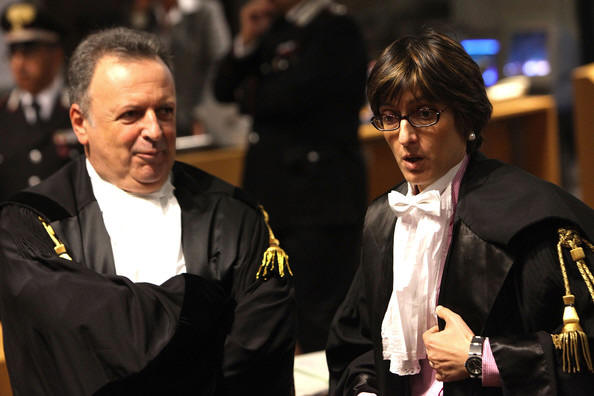
Above: Sollecito’s lawyers. Is he too thick to understand them? Or are they incompetent and giving him bad advice?
Certainly as compared to the incredibly high legal standard of the Galati Appeal, it appears that the accused, their lawyers, and Hellmann & Zanetti are all seriously outclassed.
Hellmann and Zanetti at first appeal trial, and Sollecito in his absurd book, all seriously garbled one fundamental concept in Italian law that they ABSOLUTELY need to get right if they are to have any sway with the Supreme Court.
Incredibly Sollecito’s own lawyers Bongiorno and Maori are listed as assisting him with the book and allowed this lunacy to fly.
Here is Raffaele Sollecito in Honor Bound.
For reasons deeply embedded in the country’s history, the concept of proof beyond a reasonable doubt scarcely exists in Italy.
What he is implying (in a manner gratuitously insulting to the intelligence of his compatriots) is that were the above statement not true then he, and Amanda, would have been acquitted in the first instance.
Oh, really?
It seems that we are also being asked to believe that Sollecito and his ghostwriter, Gumbel, are historians of Italian jurisprudence. So, let’s quickly examine what substance there is to the claim.
It will be seen that the concept of “reasonable doubt” is understood well enough in the courts of Italy, though unfortunately less well understood by the former Umbria Appeal Court judges Hellmann and Zanetti.
Not only that but those two judges made pointed remarks at the outset of the appeal also garbling the concept, which were very disturbing. I shall look into that in a moment.
Sollecito”˜s remark does have some context but it is wildly inaccurate and unfair.
We know that the Italian legal system is based on the inquisitorial system common to continental Europe, whereas the anglo-saxons amongst us are used to the adversarial system. It is also true that the specific expression “beyond reasonable doubt” was not introduced into the Italian criminal procedure code until 2006.
It is Article 533 of the Criminal Procedure Code: “The judge pronounces sentence of conviction if the accused is guilty of the offence charged beyond all reasonable doubt.”
Now let me defer to our Italian poster Yummi who can explain the historical context. He writes -
The current Italian system is the result of a procedure code reform introduced in 1989. This reform introduced several features of the adversarial system into a new criminal procedure code. One of the features of the new code was the abolition of the “not proven” verdict. This factually had been working very effectively as the version of “reasonable doubt” in the Italian system.
In an inquisitorial system the court is a council headed by professional judges and it’s task is not just to deliver a verdict, but to deliver a written rationale or dossier aimed to provide “a judicial truth”. Typically “reasonable doubt” is a formulation coming from systems where juries do not issue a written rationale while systems that have motivation reports on verdicts usually don’t have it: it was commonly agreed that the absence of doubt should be understood from the rationale. Absence of doubt is not a quality that is inherent in the internal conviction of a juror, but instead is understood to be a feature of the logical proof provided by the written rationale. It was believed that the absence of doubt in the judge’s mind should be shown by the fact that a motivation report is logical.
No Italian scholar would ever maintain that the “reasonable doubt” standard is a recent introduction in the Italian system. Only the acknowledgement of it’s wording is relatively recent. In the Italian system the formulation “reasonable doubt” was starting to be used explicitly in Supreme Court jurisprudence in the early nineties; a change of wording in honour of the adversarial reforms, but in fact a continuation of the long jurisprudence tradition of the “not proven” standard.”
In fact in the adversarial system “beyond reasonable doubt” is really an instruction to the jurors that they must arrive at a certain evidentiary standard if they are to convict. Any system that would produce a “not proven” verdict would mean that the standard has not been met.
In the adversarial system no written rationale for a verdict is required to accompany the verdict. That the Italian system retains this requirement is very much a safeguard for the accused as well as for the State both being thereby protected from perverse or capricious convictions or acquittals.
Second here is Judge Zanetti at first appeal:
The only certain and undisputed fact is the death of Meredith Kercher.
So said Judge Zanetti on the opening day of the appeal. It was a statement that brought gasps of astonishment from those in court, particularly from the reporters present who deemed it to be an admission that reasonable doubt existed.
In fact, of course, there were a lot of certain and undisputed facts. No one denied that there was evidence, most of it undisputed. What was disputed was the interpretation of that evidence.
That, being so, why did not Zanetti say that? Clearly the remark was injudicious, and cogent only in its intended impact.
What of the Massei Motivations Report one might ask? is it toast?
That remark not only helped to set the tone for the entire appeal - what was said soon after by his senior colleague was even worse.
Compliance with article 533 of the Code of Criminal Procedure (Judgement of conviction only if the defendant is guilty of the offence complained of beyond a reasonable doubt) does not allow (us) to share fully the decision of the Court of Assize of First Instance.
(In Italian: il rispetto dell’articolo 533 del Codice di procedura penale (pronuncia di condanna soltanto se l’imputato risulta colpevole del reato contestatogli al di la ogni ragionevole dubbio) non consente di condividere totalmente la decisione della Corta d’Assize di primo grado”)
That was said by Judge Hellmann on the third day of the appeal before even the evidentiary and discussion stage had opened. And thanks again to Yummi for the above quote.
It seems that the presiding judge had felt compelled to expand upon his colleague’s stark opening remark but in doing so he had opened a can of worms. He had just made things even worse. Unfortunately the prosecution decided not to challenge the remark and the appeal proceeded. They should have done so.
Article 533 relates to verdict. The verdict (to be) is not to be hinted at or discussed at the opening of any trial or appeal and certainly not as pointedly as this. So serious is this faux pas that I have it on good authority that the prosecution considered impeaching the presiding judge for incompatibility and incompetence. It seems that they did not because of the furore this might have caused and perhaps also because they were confident of the strength of the case in any event. In retrospect a grave mistake.
What in fact was Hellmann saying? Let us consider.
“Compliance with article 533.”¦..”¦does not allow us to share fully the decision of the Court of Assize of First Instance.”
I believe that what we see here is the first indication of the judges’ manifest misunderstanding of what should have been the correct approach to an evaluation of the evidence in the case and the application of the “reasonable doubt” standard.
I do not intend to deal with that in any detail. It is set out cogently in the Galati appeal.
Suffice to say that the “reasonable doubt” standard applies only to the culpability of the accused for the offence with which he/she is charged. Article 533 makes this abundantly clear and this is no different from how our own adversarial system deals with it. It is not a standard to be parcelled out to each item of evidence or inference drawn. That the appeal judges thought they could do (and did) precisely that is implicit in Hellmann’s remark.
How can one not “share fully the decision of the lower court”?
Hellmann could have said that he did not fully share the decisions of the lower court as regards each element of evidence rather than “the decision”, which can only be a reference to the actual verdict. But “the decision” is what he says, linking it specifically to article 533 where only the singular use of the noun would have any meaning. So on the face of it this can only be about the verdict of the lower court. And yet, how can one not fully share a verdict? A verdict cannot be parcelled out. One either agrees or disagrees with it.
Despite it’s manifest inappropriateness, no doubt the remark was meant to acknowledge that there was some doubt about the validity of the verdict in their minds. Well at least that’s honest but in that case, was it not incumbent on them to specify what it was that concerned them? I would have expected that. True, it was already clear that the DNA on the knife and bra clasp, and Curatolo’s credibility, were specific issues, as they had allowed these to be examined, but beyond that there was no disclosure as to what other doubts on the evidence they had in mind. We know now from the Motivations that there were others and what these were ( Quintavalle and the staged break-in, just for example) - and I think it would be pretty disingenuous of them to pretend that they did not exist at the time.
Already one sees elements of confusion, incompetence, mis-procedure, misleading the prosecution and coded messages (for the media and politicians?) to the effect that the appeal judges had already rationalized an acquittal in the appeal.
And if, with their doubts, they had in fact done so then what, pray, was the point of :-
1. Ordering a review of the DNA evidence on the knife and the bra clasp
2. Re-hearing Curatolo
3. Hearing from Aviello and Alessi
“¦”¦other than that they were seeking that elusive “reasonable” element of doubt.
It is almost as if the entire appeal was tailored to suit and a sham. It certainly looks that way in retrospect, particularly as the element of reasonable doubt still remains elusive on close examination.
Yet it may just be that the appeal judges were just incompetent and that their incompetence (with the incompetent assistance of Conti & Vechiotti) infected the entire proceedings.
We shall see what Cassation thinks of the garbling of this fundamental concept when the prosecution appeal is entertained on 25 March.
Monday, January 21, 2013
An Overview From Italy #2: Current Perceptions In Italy, Justice Perverters Fail, Mignini Vindicated
Posted by Machiavelli
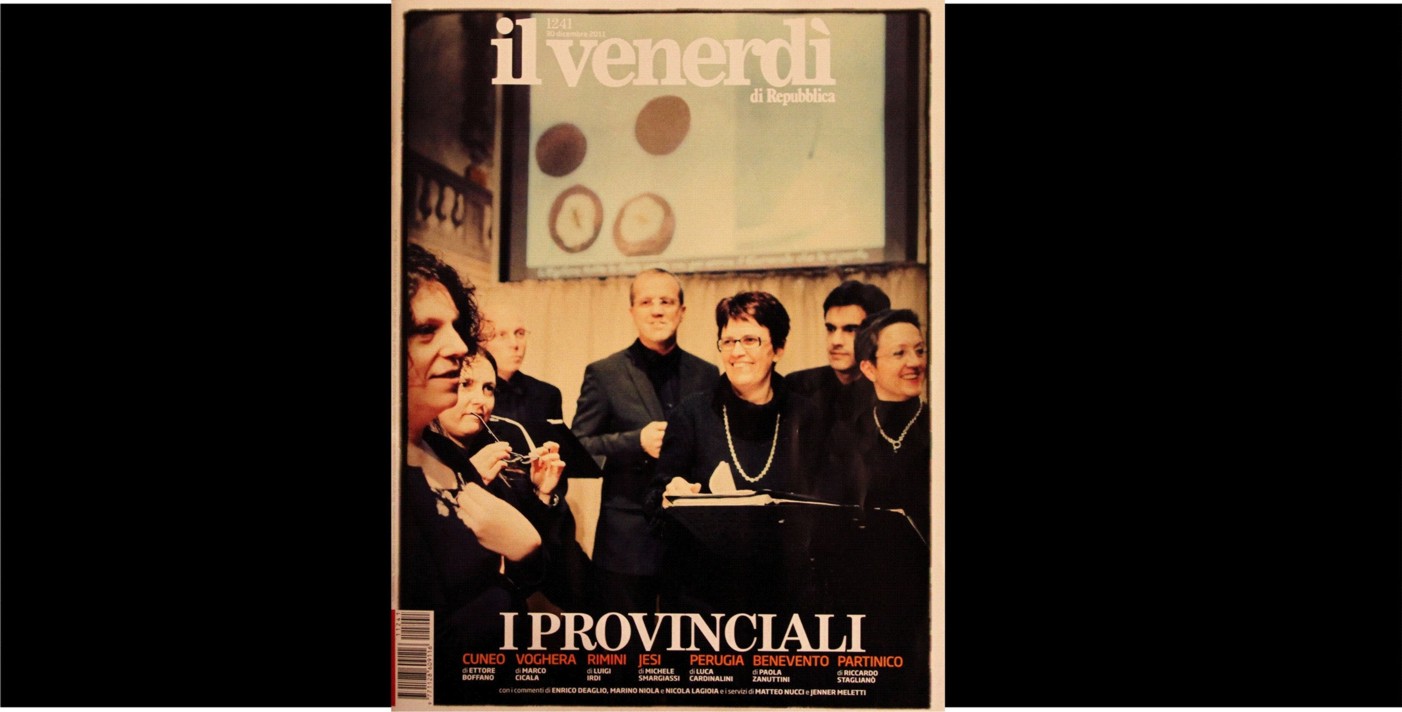
My previous report on the bad news remorselessly building here for the defense was on the Procura Generale appeal to the Supreme Court.
One year ago ““ between the end of December 2011 and beginning of January 2012 ““ there were only rare idle comments in the Italian press about the Meredith Kercher case, more or less sarcastically noting the “suspicious” circumstances of the Appeal trial. I recall how a mention of the topic was dropped into the last number of “ll Venerdì” of 2011.
“Il Venerdì di Repubblica” is the weekly magazine issued together with the newspaper “La Repubblica” (thus probably the most read magazine in Italy).
The cover theme of that week was provincialism ““ or better “the provincials” - the adjective used to assemble a sample of seven little cities (Cuneo, Voghera, Rimini, Jesi, Perugia, Benevento, Partinico), picked from different regions, and taken as examples on the theme, that is stories of “local colour”; what goes on in small “provincial places”. A few characters and stories are brought in to depict the local life of each place, and the voices of local authors adds something about the places.
The article about Perugia (at pages 62-68) was by Luca Cardinalini. In that number of Il Venerdì, having stories of “local colour” as weekly theme, there were shades of ironic tones for each city, often through the voice of local intellectuals. As Perugia is described, the Meredith trial is quickly recalled among its local stories; the reader can’t miss how this is viewed as in connection with another most remarkable feature of the city, that is Masonry.
According to Luca Cardinalini and Enrico Vaime, Masonry is called a “Specialty” of Perugia, like chocolate. Local author Enrico Vaime intends to convey the people’s perception about shady powers existing in the city, about a local environment saturated by plots and informal powers, as something behind recent strange judicial decisions such as the Hellmann verdict and the apparent dropping of the Narducci case. The widespread belief of Perugians that the Public Minister (prosecutor) is the righteous one shines through the words of Enrico Vaime.
Also notice how racism appears to be another key perception about the verdict. Quality media press in Italy has a typical style of understatement. This comment hints that it seems obvious that the Appeal was a racist verdict - and it was “expected” that they would find a way to blame the black one and the outcast.
Some of Perugian “provincialism” seems to include a very narrow localism of Perugian identity: a person from Orvieto is reported to be called “a foreigner” ; but this is because the cultural viewpoint is based on the assumption of a personal knowledge of all people. In among this, there is Vaime’s knowledge about how rooted Masonic tradition and power is in the city, in a scenario of “brotherhoods” and “tribes” (the article includes a photo of the most known “Masonic” monument in Perugia: the gryphon or griffen ““ the emblem of Perugia ““ grabbing a toppled Pope’s Tiara in a sign of rebellion).
The report by Vaime is objectively correct : the concentration of members of Masonic lodges in Perugia is the highest in the world, about 5 times the national average of Italy (which is anyway very high).
In Vaime’s wording decent people in Perugia are ‘Christians’ or ‘Communists’ ““ these are the names he uses to address the main categories he sees as “good” people, two transparent moral systems. He devolves skepticism toward the less transparent allegiances, the murky and informal connections to powers.
I believe these perceptions from one year ago, in this colorful article about Perugia, should be most interesting to the readers of this site.
The first part of the article on Perugia is not that interesting - it speaks mostly about a local character named Ivano Massetti, nicknamed “Savonarola of Umbrian football”, the director (“boss”) of a local TV network and leading showman of his own soccer talk show. I skipped this first part with depictions of local folks, and get to the point at p.66 where the Kercher case is first mentioned.
This is my translation of the article from this point:
[”¦](p.66 line 17):
As Enrico Vaime ““ a 100% Perugian, a writer, and among many other things fiercly provincial ““ already knows: “Only in Perugia do you hear people saying “actually Tizio [random guy] was not a native from Colombella, but from Piccione”, which is three times further”. And when his grandfathers (farther of his father) bearing the same name Enrico Vaime, moved his formal place of residence [to Perugia] from Spello, on the official documents they wrote “emigrated to Perugia and married to a foreigner from Orvieto”.
The roots are extremely deep. “Still today” Vaime says “when I say to my family “we go back home”, I mean here, in Perugia, where I have not owned a house for decades. And I still call the roads and shops with the names they had when I was a child, even if now the owners are foreigners, from Shangai or, as I say, from Terni”.
Vaime is cross with the bad reporters who described Perugia, in the Meredith murder case, as a capital of corruption and vice: “An invasion of charlatan journalists who, as they believed they were visiting a remote and lost province, they painted it as a sort of Chicago on the Trasimeno Lake”.
[The fact] that no Perugian was involved in that sad story, to them that was an irrelevant detail. And the trial ended just the way many Perugians expected: a black guy first wrongly put in jail, another black one convicted, the two white, good-looking, wealthy and well defended young people, free.
So it was that the Public Minister Giuliano Mignini became a target. He’s a Perugian whom the Perugians know as the dominus of the other judicial case ““ this also is, yes, entirely local ““ about which everybody talks and knows, but always in a low voice: the death of doctor Francesco Narducci, the one suspected of having ties to the crimes of the Monster of Florence. From the judicial point of view that was - by half ““ just another hole-in-the-water [a failure] for which some critics have hastily put the blame on some alleged lunacy of the public minister.
But”¦ however”¦ meanwhile, this [Naducci] corpse-swap was indeed found to have been for sure, a kind of unique case in the criminal history of the country. And, for what concerns the recent acquittals of those characters involved in this death, well, after almost a year and a half we are still waiting for the verdict motivations. All of the suspects were esteemed high-class professionals. That’s a perfect mix of strange deaths, sex, lead-astray investigations, and Masonry; this is in the city with the highest number of Masonic lodges in Italy.
Vaime sighs: “Masonry is something alien from me, but I have many friends who are in it. In Perugia it works as a compensation chamber for various powers, but also as an effort for the surge of the spirit to many decent people. Masters, masons and “33”, but all of them decent Perugians”. Masonry is considered a local specialty, just like the bruschetta or the Etruscan arch.
“One day you find out that that mediocre employee of your acquaintance, or the one who performed an incredible career in the public administration or in politics, is a “˜son of Horus’. Then you either laugh, or you slap yourself on the forehead just like saying to yourself “Wow! [how could I ] think about it!”. “That travet* [*a generic mediocre opportunist employee], too”
Vaime says “to me it is a strange Perugian, with little interest for the Egyptian god compared to his covet for entering inner circles of a certain world. Their internal motivation is “I want to see how the lords sit at the table”. But in there [Masonry], you see, there are also good Christians and good Communists; as has always happened in this province, which has the art of living together in its genes”.
[”¦. ]
This month ““ Jan 2013 ““ the Italian press returned to the topic of the case again in a few brief articles. This time it was because of Sollecito’s book.
After Maurizio Molinari’s report from New York on the book in September, and the busting by Bruno Vespa on Porta a Porta of Francesco Sollecito, who ended up openly contradicting his own son’s statements, another hint appeared in the local press about what is cooking up backstage.

This article in Perugia Today has a neutral take, but the same understatement and kind of vagueness as it anticipates that something very likely will happen.
What I find most delightful is the quotation marks in the title around the word “author” ““ journalist Nicola Bossi doesn’t believe for a moment that Sollecito actually wrote the book:
Meredith Case: “author” Sollecito at risk of criminal lawsuit
The recounts about an alleged negotiation in order to pin the main charges on Amanda Knox, and unproven violence by the Perugia Police are under target. Mignini is considering criminal lawsuit.
Written by Nicola Bossi ““ Jan 4. 2013
The Meredith case is not closed, and this despite books and movies almost tend to drop it after the acquittal in second instance of Amanda Knox and Raffaele Sollecito - who were convicted in first degree for the murder of the English girl that took place in Via della Pergola.
On upcoming March the 25th the Court of Cassation of Rome will have to decide on the request for a re-opening the trial, submitted by the Procura with the authorization of Public Minister Giuliano Mignini.
In the environment of the magistrates there is confidence about a [guilty] verdict that many ““ in Italy and in the USA - have heavily attempted to discredit. But from the same environments around them, they talk about a greatly serene Mignini making assessments about the next strategic moves, following the attacks directed against him ““ and against those in Law Enforcement who cooperated with him ““ contained in the book by Raffaele Sollecito.
An upcoming criminal defamation lawsuit is becoming more and more likely every day, especially about some particular paragraphs. The material published by Sollecito has already resulted in discussions and clamor above all about claimed negotiations [with the prosecution] aiming to shift the blame onto Amanda alone, to be rewarded with his immediate release.
But there are also accusations against the Police about violence during his interrogations. “If you dare get up and walk, I beat you up in a bloody pulp and I kill you. I leave you in a pool of blood”. This is what you read in the book “˜Honour Bound’ issued in the US, as what Sollecito attributes to the Perugian officers.
“They wanted me to lie so they could frame Amanda”: this is the premise of the claimed negotiations claimed to indirectly involve Mignini too, which he always denied. Allegedly this would have been enough to get [Sollecito] out from prison soon, leaving the American woman in trouble.
So, these are grave accusations which Mignini apparently does not intend to let go unpunished. The criminal lawsuit is likely to be filed earlier than the date of Cassazione [25 March].
Another small piece of news is this article below published in Leonardo and written by Valentina Cervelli:
It seems basically a “commented” version of the Perugia Today article. Cervelli adds a few polite lines on her own thoughts in this piece, published on the Bbooks page of Leonardo,it; this is my translation:
Is Raffaele Sollecito going be sued soon for “Honor Bound”?
By Valentina Cervelli - 6. Jan 2013
Are there troubles in sight for Raffaele Sollecito? His “Honour Bound” book is going well in the United States in terms of sales, but here in Italy it might be soon result for him in a lawsuit for defamation by the Law Enforcement forces and by the Public Minister Giuliano Mignini.
As we know already, in Honor Bound ““ My journey to hell with Amanda Knox and return Raffaele Sollecito has reconstructed the whole judiciary story from his point of view, telling in his autobiography what [he says] is his own truth.
On March 25 Cassation in Rome will decide on the [prosecution] request for the re-opening of the trial submitted by the Procura authorized by Giuliano Mignini, after the acquittal in the second instance of the two main accused, Sollecito and Amanda Knox.
The young woman has returned back to her country and we bet it’s going to be difficult, if not impossible, to get her back in our country even in case of retrial after Cassation and a possible conviction. But lets leave aside this possible dispute and lets focus on the book. In Raffaele’s book Mignini is iimplicated because he reportedly comes out discredited. In the material published by Sollecito in his book he even talks about alleged negotiations in order to blame Knox alone, obtaining in reward a quick release.
And what about the allegations of Police violence during interrogations? Of course we don’t get into the merits, but it seems obvious that parties that may be considered offended would tend to launch a counter-attack to defend their dignity and their work. At the moment no lawsuit has been submitted. But with much probability that will be done before the decision of Cassazione.
By now we can only wait for the publishing of the book in our country, in order to assess with our minds what Raffaele Sollcito has written and the “hot” material published in his made-in-the-US autobiography.
By the way; one thing Valentina Cervelli might get wrong is the purported good sales of Sollecito-Gumbel’s book.
The Amazon.com site is reliable as quick indicator of a product’s success; the price of a new copy of “Honor Bond” on Amazon.com is now $ 3.51 (last week it was 3.76; the cover price is $ 24). It suggests sales are not quite as expected. The drop speed is significant if you consider that the book has been out for only four months.
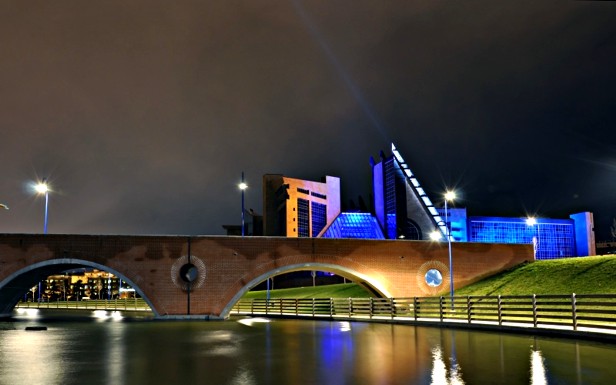
[Above: the Florence Palace of Justice]
While many honest magistrates seem to be working in Florence, there is still some strange behavior by one or two people in the Florence prosecution office.
Iin particular by the chief prosecutor there were some unexplainable decisions. As people reading this site know, Giuliano Mignini and Michele Giuttari were convicted (of some of the charges) in the first degree trial in Florence.
The motivations document was disconcerting because: besides the proof of their innocence on the main charge, what was described as the evidence on the remaining charge constituted extremely weak and vague arguments for what was claimed about Giuttari, while they were totally non-existent about Mignini.
In the second instance appeal as we know the court completely crushed the trial case.
The case against them collapsed not because of a technicality, as the FOAs falsely claimed. In the figment of their imagination the Knox supporters erroneously thought that the Florence court had an “option” to overturn the case, to find Mignini and Giuttari innocent, but that they instead decided to pass the judgment on to some other tribunal.
The pro-Knox believers are probably also ready to believe blindfolded that there was some kind of evidence against Mignini.
The Knox believers are wrong. What in fact happened in Florence is something almost unique in a judge’s career. The first remarkable event was the decision by the Florence court of nullifying the first degree verdict. They did not simply overturn the verdict (neither change, or “reform” it as we say) since an overturning would imply acceptance that a previous verdict actually existed and was legitimate.
The cancellation was in fact an in limine act about the validity , which does not require an assessment about it correctness. The court went way beyond. In fact they nullified the whole trial, not only the previous one in terms of judgment, but also the preliminary hearing, and the indictment; and even the request of indictment.
It is a legal outcome not comparable to a simple change or overturning because it is a ruling that the whole proceeding was illegitimate from the very roots. The investigation itself of Mignini and Giuttari was declared illegitimate.
If elements were found for the opening of an investigation, the prosecutor would be entitled to carry on their duties, though the investigators should be from another territory. This is important because the Florence court found evidence that people from the same office were involved in cases against Giuttari and Mignini, both as offended parties and as prosecutors.
Because of a basic conflict of interest, the local prosecutors were incompatible and the Procura of Florence had no jurisdiction. Not even Genoa would be compatible.
Florentine prosecutors therefore had no right to bring cases against Mignini and Giuttari. The investigation files now must now be sent to the competent jurisdiction ““ where they should have been sent from the beginning ““ which is Turin; there other legitimate prosecutors will decide if and how there is anything to investigate about, and if there are any charges to bring against anyone. The Florentine trials should have never taken place. The court ordered that the legitimate investigators are the Procura of Turin.
In addition, they also ruled that the court of Florence would be an incompetent jurisdiction in any further possible case that stems from that investigation: since the competent prosecution is Turin, in case elements for the indictment of anyone for any charge are found, in the future, everything should go to a court in Turin ““ this, only if there will be any charge to bring to court .
This decision in Florence was a total debacle for the Florence prosecutors. It is in fact “politically” much worse than an overturning of a verdict. It is not just a like a different conclusion on the merit, it is the decision to take away even the investigation from them, a kind of implicit censure of their work as highly illegitimate.
But at this point in the procedings, something even worse and even more strange happened. The Procura of Florence did something even more unusual, in fact unprecedented as far as I know.
Apparently the Florence prosecutors are not happy at all to pass the investigation file on to Turin. For some reason they seem instead to want to do unnecessary and irrelevant hard work instead. The Florentine prosecutors impugned the decision and revisited this at the Supreme Court against the Florentine judges.
This step is almost unheard of because the decision of the Florence appeal court is of a type that manifestly cannot be impugned at the Supreme Court. The recourse is obviously going to be declared inadmissible. If that submission was done by a private citizen, they would get a heavy fine for that.
Here it is a power in the Florence judiciary branch making this inadmissible move; for unknown reasons.
I’d like to know the real motive behind the latest Florence move, the only effect of which can be a waste of time (and money), a delay, of at least one or maybe two more years, which only makes the failure of the whole proceeding against Mignini and Giuttari more likely due to lapse on an expiration terms.
I say “I’d like to know” but in fact one motivation stands out as obvious: the whole proceeding against Giuttari and Mignini, from the first bringing of the charges at the lower courts, appeared as having a wasting of time among its purposes.
One practical effect - maybe a practical purpose - of pushing the charges against Mignini, was taking the file about the Monster of Florence case links with the Narducci case away from Perugia. By this move, the Florentine prosecutors managed to factually put their hands on the Narducci-MoF file and remove it from the investigating powers in Perugia.
Another effect of this was delay. Now this latest move looks as if its purpose were to delay, as much as possible, the transfer of the legal documents to Turin.
What is the ultimate event that, by all this, they seem to be seeking to delay? I can’t know for sure, I can only guess; in fact, I have only one answer, which also stands out as something obvious for those who know a bit of the backstage:
Giuliano Mignini is not an ordinary magistrate, he belongs to the Anti-Mafia Territorial Division of Umbria, and recently was selected for a further promotion by the Supreme Council of Magistrates.
In fact what is delayed is the advancing of Mignini’s career: in fact he has been already promoted to a directive function; but, by the rules, his taking the post was frozen while awaiting the outcome and conclusion of the Florentine prosecution.
Prosecutor Mignini is de facto already functioning as a prominent Magistrate in Perugia and considered as such; but formally he has not been given the directive power. Several people ““ among them Spezi and a number of his journalist friends, but possibly also other much more important people too ““ are likely not at all eager to see Mignini awarded further power.
About the latest endeavor by Raffaele Sollecito, who became liable for criminal defamation by writing false allegations about Mignini and others in his book, I expect - as logically unavoidable ““ that several powers and subjects will basically have no option but taking legal against him.
There will be a strategic necessity to doing this in order to prevent extradition issues in the future, but also, above all, on principle, because Sollecito made false claims about public institutions that needt to have their names cleared. Considering the kind of allegations against the judiciary as an institution, and considering that Mignini is a judge of the Anti-Mafia Division, this is the kind of lawsuit that I see as likely to be submitted on a national level, in Rome.
If that is the case, it would not be the only strange thing that the courts of Rome will deal with.
It seems like there is a kind of “curse” on proceedings related to the Narducci case. All sections of the Supreme Court which have been asked seem to have attempted to declare themselves “˜incompetent’ about re-opening the cases related to the Perugian doctor. The Cassazione is a huge office with a hundred judges working there, but maybe not so many of them are eager to deal with this case.
This could be only a coincidence. It only brings up to my mind, through a free association of thoughts, a more generic question ““ a personal question of mine ““ that is whether the words “Masonry” and “Politics” have an echo in Roman corridors too.
*****
Finally I want to add another significant piece of Italian news.
The news a week ago was that the Procura of Florence is investigating a possible corruption/mafia plot involving construction enterprises and politicians that revolves around the building of a new high speed railway in Florence.
Some 31 people are being investigated and among them is the former governor of Umbria. A huge drilling machine ““ nicknamed the “Mona Lisa” ““ used to dig subway tunnels in Florence was sequestrated by the Procura.
In the last couple of years Perugia’s prosecution office had a main role in fighting political corruption, but it seems that the Florence Anti-Mafia division is also active, just as it was in the times when the prosecutor Vigna worked with them.
Vigna was the one who first evolved the “secret sect” scenario in the Monster of Florence case, raising unexpected problems among the Procura staff.
Wednesday, January 16, 2013
Both Oscar Frontrunners For Best Movie Criticised For Highly Misleading Foreign Depictions
Posted by Peter Quennell
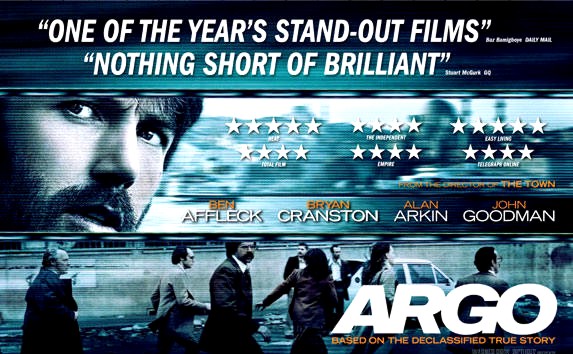
Now that the cycle of Godfather-type films is done, American movie demonizations of Italy and Italians seem to have dried up. At least for the moment.
Hollywood has long relied on demonization and paranoia-building to pull the paying crowds in - the Colonial British and “Redskins” in historical drams and westerns, the Nazis (okay, maybe that was fair enough), the Russians back in Soviet days, and most recently middle eastern mobs and subversives.
Form your impressions of foreign countries only from American TV and movie depictions and you might end up where the FOA are now: paranoid and delusional that entire countries are pagan and that their modern justice systems are “third world” and that somehow they all succumb to the grip of one evil megalomaniac..
Anyone who follows PMF and TJMK closely knows that the opportunist rants of Doug Preston and Steve Moore and Nina Burleigh and Bruce Fischer about Italy and the official participants in the case are really complete poison.
Italy has a very low crime rate and very few murders, its prison system is only 1/30 the size of the US’s, and its justice system is very modern - it was only created, very carefully, after World War II. Most of its faults flow from politicians like Berlusconi bending and defunding the system to keep their corrupt pals on the streets.
Every week Hollywoord movie and TV depictions come out that falsely depict what are often modern, well-run countries, and especially falsely depict their cops, lawyers, and judges as incompetent and corrupt.
The GOOD news is that there is also a steady effort (in parallel to ours here) by informed and humane people - both Americans and those from the falsely depicted countries - to push back and enlighten. To try to call a halt and correct the damaging notions put out there.
One good example is the movie Taken 2 with Liam Neeson which takes place in modern Turkey. Was it the real modern Turkey? Here are examples from IMDB reviews of strong criticism of this xenophobic movie.
This movie is utterly awful unless you are ready for a bad comedy. There are tons of flaws. Albania doesn’t border Turkey. Istanbul is a magnificent city. In the movie it is portrayed as a third world country slam hole. Police in Istanbul have new cars… Shots are fired in a hotel, grenades are detonated in a middle of a cosmopolitan city ...and there’s no Police…
i got a couple words to the idiot/s who produced this movie
1. Turkish borders don’t look like parking lot barriers
2. Try shooting grenades and guns in Istanbul and count how fast special forces and police will be on your head
3. We discharged those ancient police cars in 1980s. didn’t you have budget for good ones?
I just hated the director’s point of view about Istanbul, and Turkey. In some scenes you see some women wearing pitch black clothes as if they live in a country governed by Islamic rules. No!!! Turkey is not like that!!! Its constitution is more democratic than many ‘democratic’ countries in the world. And especially, women had their rights before many ‘democratic’ countries in the world. For example Turkish women can vote or can be elected since 1934! Just check the history. You will see Turkish women had such rights before millions of other women living in other countries.
Turkey is a secular, democratic and modern country. You can see the people very modern looking all over the city, not ninjas! The people of Turkey do not wear such pitch black clothes like the people living in an Islamic country. Not only the appearance, but also the thoughts are modern and contemporary in Turkey! Why did director tell a big lie to the world? Is there a political reason? Should a director act like a horrible politician?
Of the 300+ reviews on Taken 2 there on IMDB over 200 take issue with what is depicted.
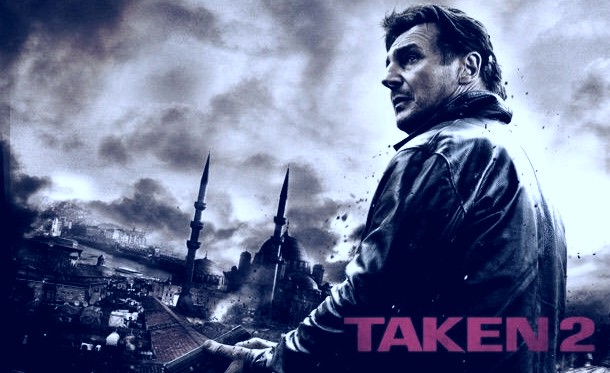
Now one of the Oscar frontrunner movies, Argo, is also being labeled as factually false, misleading and demonizing - with luck (we shall see) enough to cost it the Oscar.
What it SHOULD depict is a Canadian operation led by Ken Taylor to get six Americans out of the Canadian Embassy in Iran in 1980 when Teheran was already a sophisticated city that had been allowed to fret and go sour for too long under the iron hand of the high-living American-supported Shah.
What it DOES depict is something almost opposite: an American (CIA) operation led by Tony Mendez to save their six people from crazed hordes of fundamentalist Iranians. Here are examples from IMDB reviews of criticisms of the depiction of the country at that time, and the role played by Americans.
It did have one irritating thing… kind of a big one. It pointed most of the accolades to Affleck’s character and the CIA. This really was not true. It was Ken Taylor and the Canadians who really pulled ‘the Canadian Caper’ off so successfully.
“When Taylor heard a few years ago that Mendez had sold movie rights to his book (which, to be fair, is much more generous than the movie about Canada’s role), “I said, ‘Well, that’s going to be interesting.’....“The movie’s fun, it’s thrilling, it’s pertinent, it’s timely,” he said. “But look, Canada was not merely standing around watching events take place. The CIA was a junior partner.”...
So the USA does another revision on history here. I believe ‘Argo’ goes this far. Yes, it’s based on a true story - the movie does it’s best to allude that it sticks to technical accuracy. And it really does, in some ways. Historical pictures of flag burners, rioters, gate climbers, etc.. up against Argo film stills run by during the credits make it seem that the facts were adhered to down to the tiniest detail. In reality, it wasn’t Tony Mendez or the CIA who were responsible for the success of this operation; actually they were barely there.
In this movie they pictured Iranians like a bunch of savages who try to kill Americans and burn their flag at any given moment…. The problem is people did the revolution to have a better country and to get rid of the shah,who was a bad leader but they chose a much worse option, the Islamic republic. when i spoke to those people who were a part of that revolution, they told me “we didn’t know hi-jab would be compulsory for women,we thought it would be a free country with Islamic laws” “we didn’t know”¦” .It’s all they can say, that they didn’t know this and that could happen.
The historical inaccuracy has been pointed out in other reviews: no, things didn’t happen that way, the Canadians deserve much more credit in that operation than this portrayal ever shows. Notwithstanding the role of the US in sustaining a puppet dictatorship during the Shah and actively interfering in a sovereign country’s domestic politics for decades prior to the events….What I dispute is how incredibly shallow and predictable the storytelling is:
It could not be more islamophobic if it tried. I am not saying the Iranian revolution was something pretty. It really wasn’t. Here is a list of the disturbing in the portrayal of Iran in Affleck’s Argo:
When the Iranian people spoke Farsi in the film there were no English subtitles. If an American spoke Farsi there magically appeared subtitles.
Every single Iranian in the film was angry. This was the only emotion they could express. According to Argo all Iranians are hostile.
Showed no culture, not a single educated Iranian of their own right. There was one “good” Iranian who was a housekeeper to the Canadian ambassador. No character development at all, she serves her purpose and leaves. Apparently fled to Iraqi cause thats going to end well for her children.
The streets of Iran were made to look like the streets of hell. The streets are shown with either one of these characteristics 1. angry Iranian mob protesters who are in favour of the Khomeini; 2. militia terrorizing and murdering it own citizens; 3.objectified Iranian dead bodies.
The basic fact that for a short period several American consulate workers were in hiding and were flown out under fake identities is true, but a lot is missed out. They first hid in the British consulate, but were moved to Canada House on British advice (as best as I can glean from various Internet sources), and the whole operation was a joint venture between at least three countries. What we get is a ‘Yankwash.’
Pretty much nothing in this film actually happened (time-wise, people-wise, story-wise), so what’s left is just the movie in itself. Where Ben Affleck portrays a man with clearly no emotions, the group of six ‘escapees’ clearly experienced difficulties portraying fear. Add in the classic ‘America is the smartest country in the world, and the bad guys have the intelligence no bigger than a pile of (you know what)’ and you’ll find this movie pretty annoying (like I did).

The other Oscar front-runner for best movie is Zero Dark Thirty about the American raid in Pakistan which resulted in the death of Osama Bin Laden. Criticized mostly for being boring but also for ends justifying very harsh American means including repeated torture of foreigners . Here are two quotes on these lines, again from reviews on IMDB.
Zero Dark Thirty is one of the most offensive propaganda film crafted for critics and American jingoists I’ve seen in a long time. There is nothing worth while in this film. It’s dull, repetitious, badly acted mess without a clear goal or any intentions of exploring it’s subject matter, politics surrounding it and moral and ethical questions.
Some parts of this “movie” remind me of black-and-white Nazi propaganda documentaries. Shooting female civilian in the back is not a heroic act. Not even in a war. Never was. I have some doubts about what real happened on that night in Pakistan. Why the most wanted was not taken alive. Submitted to a Court. Show him to the world and let the American people judge him. Interrogate him. Using the law to make justice. Nothing of this was answered. All the movie its like a very bad documentary about assassination and torture

